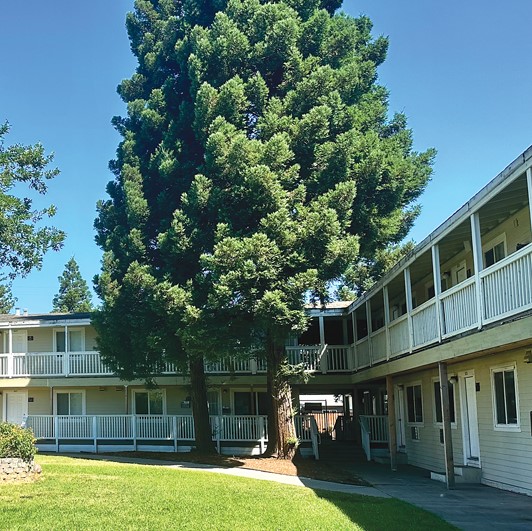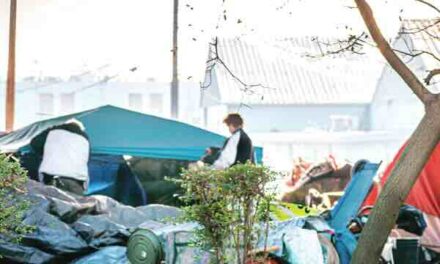Strategies and services offered to homeless people are varied, depending on the situation. In Sacramento, the city and county provide services. So do numerous nonprofits and faith organizations.
Sacramento Steps Forward created a coordinated entry system. It starts with access from three sources: street outreach, partner agencies and 211—the primary entry point for homeless services. The pathway starts with assessments and prioritization.
But every program requires homeless people to accept intervention. It’s important to understand a huge proportion of homeless individuals prefer life on the streets over help.

Another problem is the enormous government resources spent in California with little result other than the problem just getting substantially worse. The state has spent $20 billion on homeless services in the past five years.
In 2023-24, our city plans to give $42 million to outside service providers for homeless programs. Despite this tremendous investment, the local homeless population has more than doubled in the past three years.
It’s fair to ask, what have we received from this spending? Civic expenditures and government-funded programs often lack accountability. Sacramento is no exception.
Assistant City Manager Mario Lara admits the city has not audited spending on homeless programs. He says audits are being planned. But will a city audit gauge program effectiveness, or just audit dollars spent?
The cost of the homeless crisis is not limited to service programs. Almost every public agency has costs associated with homelessness. This includes police, sheriff and fire, parks and recreation, and more. Records show the city received nearly 100,000 calls involving homeless services since 2020.
The crisis impacts budgets of nonprofit business associations, including the Midtown Association, Greater Broadway Partnership and Downtown Sacramento Partnership. All spend dollars to keep streets, properties and small businesses safe and clean.
Let’s not forget private property owners and residents. You’re on your own for personal injury, theft and property damages.
Two years ago, I was invited to join the community advisory board of the local Salvation Army chapter. I was eager to help. Salvation Army programs for homeless people are exceptional. They produce measurable results and cost significantly fewer dollars to administer.
The Salvation Army is an international, faith-based organization. Officers who run programs are paid salaries less than $27,000 a year, plus housing and car allowances. Even national directors are paid no more than $60,000 a year. If they are married, spouses must serve as officers. They typically work three years in one location, then move. Many children of officers follow their parents into service as adults.
The Salvation Army runs several successful local programs: Family Services (including childcare, youth sports and food distribution), Workforce Development, E. Claire Raley Transitional Living Center, Center of Hope shelter and Next Step Transitional Living Center. I recently toured them.
The Center of Hope Emergency Shelter at 1200 North B St. provides 125 beds with three meals a day. No drugs, alcohol or pets are permitted. The shelter is open 24 hours.
This summer, I had lunch with the shelter’s program manager. We were joined by a social worker and three residents. Each story was unique. One man was employed and waiting for housing. Another looked for work each day, which the program encourages for independence.
An older woman was thrilled with the resources. All were grateful and hopeful. Bible studies are optional.
The food distribution program in North Highlands collects donations of fresh, frozen and packaged foods. Volunteers box up items, including bread, dairy, fresh fruit, vegetables, meat, canned goods, rice and beans. Donations come from Sacramento Food Bank, grocery recovery programs and private donors.
Three mornings a week, the warehouse provides a drive-through that distributes one box per household. One of the largest local food banks, the program serves more than 1,000 people a month.
Workforce Development is located on Ninth Street with Next Step Transitional Living Center. Classes are held in culinary arts and construction through union partnerships. The transitional shelter for single men, clean and sober for at least 30 days, provides a bed and meals.
The program that stood out was the E. Claire Raley Transitional Living Center. The apartment complex has 35 two-bedroom furnished units for families with children. The site includes a gated campus with lawn, playground and vegetable garden.
Families are supported by case managers who help residents become independent. Rent is $750 a month. Residents can stay two years. The program graduates at least 100 families a year and changes lives. The model should be duplicated far and wide.
Despite the success of Salvation Army programs, the government only pays for the Center of Hope shelter and childcare program. This represents about 25% of annual local funding. Private donations cover the rest.
Sacramento has other programs—including St. John’s Program for Real Change—that deliver great results for little money. In many cases, they receive no government funding.
How can local, state and federal governments spend incredible amounts and not demand better results? Sadly, elected and civic leaders have failed us. Again and again.
Cecily Hastings can be reached at publisher@insidepublications.com. Follow us on Facebook and on Instagram: @insidesacramento.















